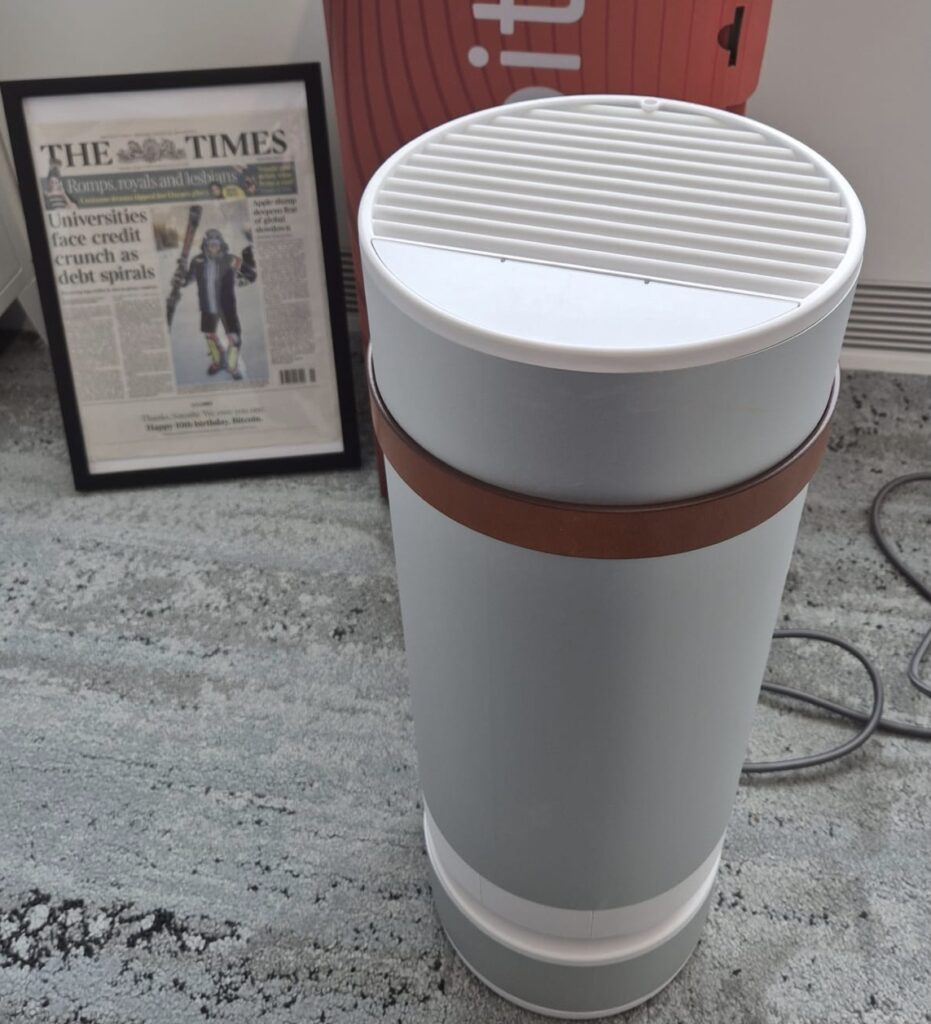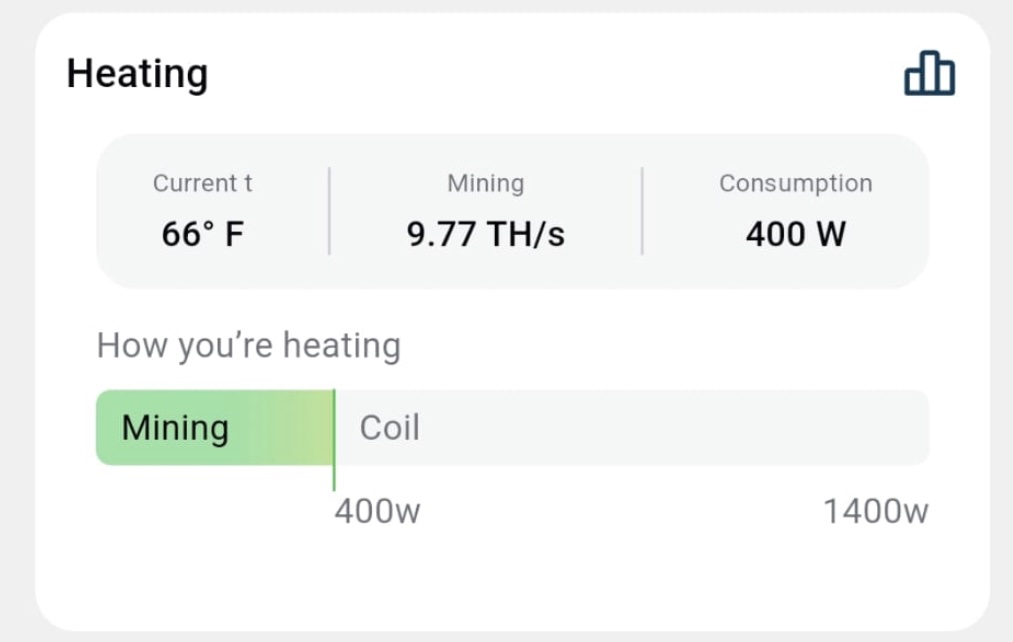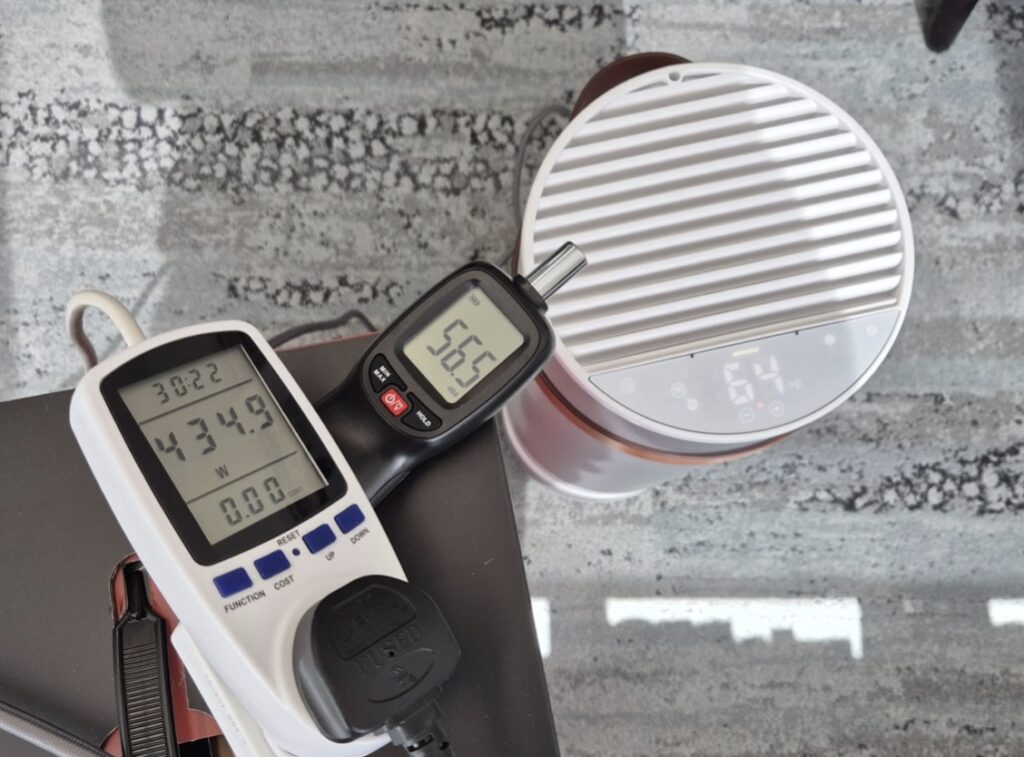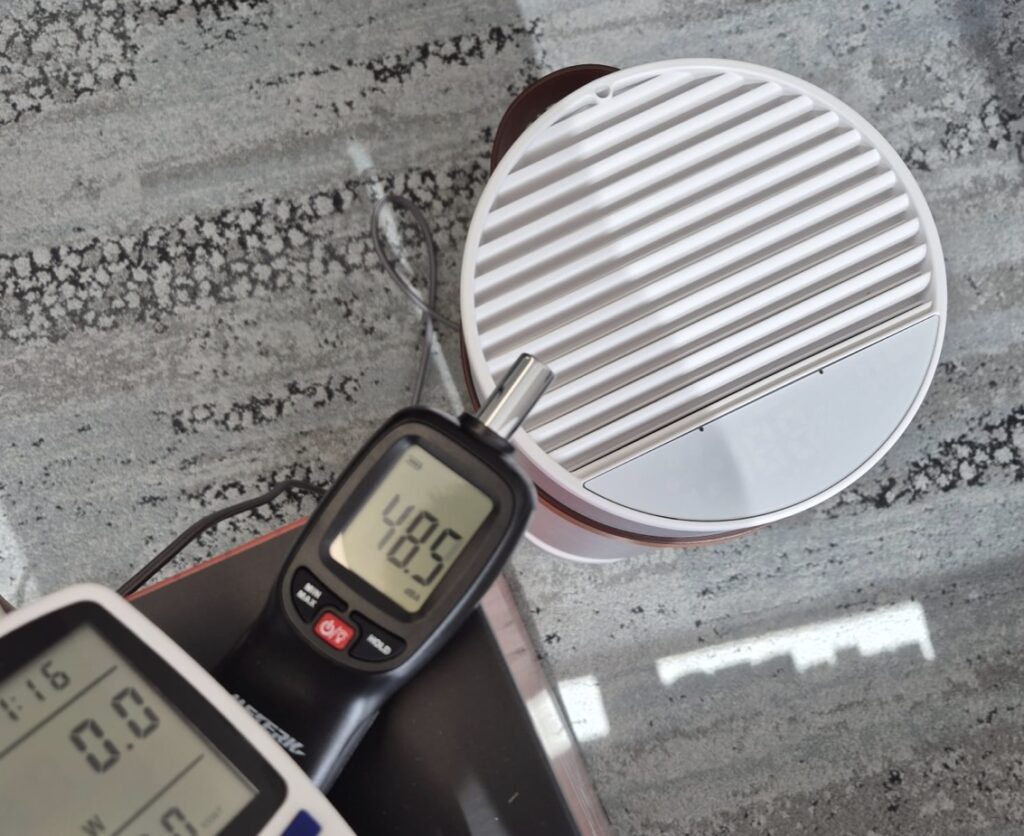Heatbiting The Office
Abstract: We review the Heatbit Trio Bitcoin mining heater. The product is essentially an old Bitcoin miner in a nice case with a quiet fan, however it is simple, easy to use and looks decent in an office environment. In our view more functionality could be added to the mobile application. As for the economic viability of the miner, it might make sense in certain scenarios, such as the office of a tech startup in a cold location where costs can be written off for tax purposes, but otherwise the miner is quite energy inefficient and expensive. This is an interesting area to watch and we are pleased we could try out the miner.

Overview
We obtained the Heatbit Trio and used the Bitcoin miner to heat our office. We consider Bitcoin mining heaters to be an important area to focus on for the long term. This is because, in our view, as the useful economic life of ASICs increase and production costs decline, presumably the heating use case will eventually become economically significant in the Bitcoin mining industry. If one needs the heat anyway, for example to keep your office warm, then in theory this makes mining 100% energy efficient and the operational energy costs are zero.
The trouble is that normal non-mining heaters may have a useful life of 10 to 15 years, while new more efficient generations of Bitcoin miners come out all the time. At the same time, producing Bitcoin ASICs is expensive and therefore it only makes sense to invest in ASICs if they will be mining all the time, not just when one wants heat. However, presumably, over the long term, due in part to the physical limitations of Moore’s law, the rate of improvement in ASIC efficiencies will decline, such that ASICs can economically mine Bitcoin for much longer, for instance 10 years. The cost of production should then also decline as less new risky tech is involved. When this happens to a sufficient extent, it may make sense to integrate Bitcoin mining with heating equipment. For instance swimming pools, commercial boilers, residential boilers as well as commercial and residential electric heating systems. For this reason, we find Heatbit’s business model fascinating and it’s a company we are keen to watch closely.
The Heatbit device we acquired can mine with up to 400W and if you are cold, you can turn the heater up to 1,400W, with the extra 1,000W only doing the heating, not mining.

Image from the Heatbit mobile application
First Impressions
The device is essentially an old Bitcoin miner, in a nice round steel case, with a quieter fan than a normal dedicated Bitcoin miner. The product is designed to be a consumer friendly device, competing with perhaps Dyson, rather than being designed for Bitcoin geeks.
One of the key negatives we first picked up on was that there appeared to be no way to control the device in the mobile application, although it could be monitored remotely in the application. This seems like an important feature to be missing. Normal non-mining heaters do not really require an internet connection, but since a mining heater obviously does need the internet, having the ability to remotely control the heater seems like a no brainer. Expensive Dysons have this capability. Perhaps the company could add this functionality by upgrading the mobile application. We also found the display on the Heatbit a bit clunky compared to the Dyson air purifier. While the Heatbit is a neat and nice looking device, in terms of looks and the control panel, it is materially behind the equivalent Dyson, in our view.
Another weakness we identified was that it does not seem possible to select your own mining pool. The product is designed to be more consumer friendly, rather than allow for customisation or complicated endeavours like solo mining. However, it does seem like adding this functionality in the settings would be a useful feature. This also only requires a software update.
Machine Operating Metrics
The first thing we noticed when operating the machine was the sound. We conducted the mining in an already noisy office, with ambient sound of around 48.5 dB. Therefore, we thought we would not be able to test the sound of the machine, which was advertised as producing 40 dB. However, the miner was noticeably loud and we recorded sound with an amplitude of 56.5 dB when the machine was switched on. Using decibel mathematics, which admittedly we do not know the science of and are not entirely sure is appropriate in this case, we calculated the Heatbit produced sound as follows: 56.5 dB – 48.5 dB = 55.8dB. This is well above the advertised level of 40 dB. Assuming our decibel maths is correct, this is somewhat disappointing. This is still far quieter than a normal ASIC miner, which can generate sound of around 80 dB.

Heatbit machine switched on

Ambient sound with machine switched off
The machine power usage was typically around 440W when on mining only mode, slightly about the c400W the machine reported on the application. The app also typically reported a hashrate of around 10 TH/s. However, there was no way to verify this as we cannot see the pool settings or what the pool is reporting. Therefore, the only real way to verify the hashrate is to wait until we receive Bitcoin rewards and then try to back calculate the hashrate we had.
Using the reported figures from the mobile application, the mining energy efficiency is around 40 J/Th. This is about as efficient as the state of the art ASICs released in Q1 of 2020 or around 5 years ago. The Heatbit retails for US$1,000 and one can buy an old miner from 2020 for significantly less than this. However, if you wanted to use an old miner as an office heater you may want to try to modify it to reduce the noise level and cover up components so office staff cannot tinker with the device. Also, non modified miners are not consumer friendly products and therefore more challenging to set up. This is essentially the advantage of the Heatbit product, it looks like a normal heating product, so will not attract attention or raise issues in a traditional office environment.
Conclusion
The miner is clearly loss making, when you factor in commercial electricity costs. However, if it’s a heater and you only use the miner when you would otherwise be heating, the electricity cost is zero. This makes mining economical, except for the capital cost of the machine. You could probably purchase a simple equivalent electric heater for around $200 and it would take years to earn back $800 difference from this miner in Bitcoin. Therefore, the miner does not make much economic sense. Another product to compare the Heatbit to, is a Dyson air purifier, which retails for around $780, only a couple hundred dollars less than the Heatbit. In our view, the Dyson air purifier looks nicer, has superior air quality control features and has a better mobile application. However, when compared to an expensive Dyson heater, you can make the argument that the Heatbit does indeed result in economic savings because of the Bitcoin you can mine.
One can see the tax advantages of the miner, for instance a business owner could heat their office, write off the cost of the machine and the energy costs as an allowable tax loss and then keep the Bitcoin personally. When doing this, the machine can be economical as a miner. Please note we are not giving tax advise and are not sure if this tax treatment is correct. This is an interesting product and it probably makes sense for a well funded tech startup with an office in cold locations. Heatbit is a business to follow and we hope they were not too early.
The post Heatbiting The Office appeared first on BitMEX Blog.
BitMEX Blog
















